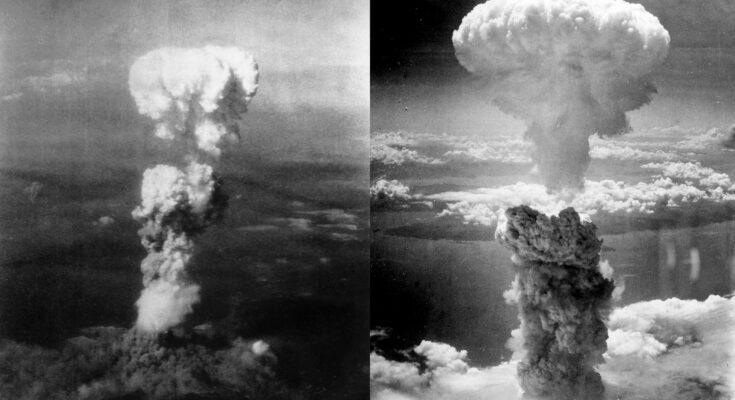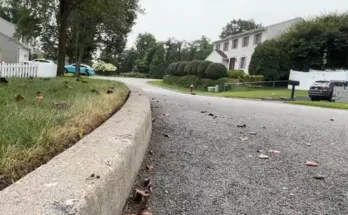On the dreaded days of 6thand 9th, August 1945 the United States nuclear atomic bombing jolted the cities of Hiroshima and Nagasaki respectively. The first atomic bomb was named Little boy while the Second was named Fat Boy. It killed more than 0.2 million people and almost annihilated the infrastructure. Subsequently, the emperor of Japan Michinomiy Hirohito announced the surrender of his nation.
Why Hiroshima and Nagasaki were bombed
America wanted to cut the war-waging ability of Japan and command its sway over the pacific region. Hiroshima was the first city which was bombed. Why was Hiroshima chosen as the bobming site? Hiroshima was the Chugoku Regional Army headquarters and an industrial hub of the country. Therefore it was considered to be the most appropriate place to be targeted.
After Hiroshima’s debacle, it was anticipated that the Japanese would give up and surrender but it wasn’t so. Resultantly, another atomic bomb named Fat Boy, weighing about 1000 pounds was dropped over Nagasaki.
The horrific bombing saw the annihilation of human lives and the infrastructure of the two cities. The radiation after the bombing wreaked havoc and for many years to come, the human morphology of the vicinity was affected.
Effects of Nuclear bomb on Hiroshima and Nagasaki
The nuclear explosions had a disastrous impact on humans and the ecology of the affected cities. Almost all humans and animals were burnt to death by the extreme heat and pressure created by the blasts. It was not only the heat and pressure but the radiation post-bombing that caused cancer and other skin diseases. Marine life was badly hit thus disrupting the whole ecological system.
The survivors of the attacks were called “hibakusha’. It is estimated that about 140,000 people in Hiroshima and 74,000 in Nagasaki died. While many died of the radiation and the trauma including children.
Affects on Children of the Two Cities.
Children from Hiroshima and Nagasaki who had lived there at the time of the atomic bombing—the majority of whom had a history of epilepsy and radiation sickness—were weighed, measured, and had their skeletal ages determined by X-ray photography in 1947 or 1948, again in 1949 or 1950, or both. These results were compared to those of Kure children and children who had lived in Nagasaki in 1948 and 1950 but not at the time of the bombing.
The age ranges of the exposed and control groups were matched, with the majority of the groups containing between 100 and 200 boys or girls (from 7 to 13 in 1947). Based on information gathered during the SCAP Nutrition Survey in 1946–1947, the results were also assessed in comparison to tables designed specifically for Japanese youngsters. Tables and graphs are used to present the results.
There was no noticeable difference in weight or height between Nagasaki controls and children exposed in Nagasaki. The males from Hiroshima were noticeably shorter and lighter than the boys from Kure in 1947, and the boys from Kure were noticeably shorter but not noticeably lighter in 1949. The girls showed no discernible differences. All groups had weights that were far below the requirements, and many of them, including the exposed boys, had heights as well. In comparison to Nagasaki controls and Hiroshima children compared to Kure children, exposed Nagasaki children were impaired at the skeletal age, with the differences being significant for boys but not for girls. Concludingly, the exposure to atomic bombardment had its toll on the growth and development, and despite the significant improvement, some effects were still present five years later.
Japan recovered after being Nuked
Due to the destruction of all of its sources of income during World War II and the inflation that followed the war’s end, Japan was in a dire financial crunch to fund reconstruction. Numerous cities were in dire need of money for restoration, and the Japanese government itself was on the edge of becoming bankrupt.
On August 6, 1949, the fourth anniversary of the atomic attack, the Hiroshima Peace Memorial City Construction Law was finally passed after considerable work.
The Hiroshima Peace Memorial City Construction Plan was approved in 1952 under the law.
Today, it can be seen that Japan is one of the most developed economies in the world. The Per capita income, growth, development, and other macroeconomic indicators are positive.
Lesson to learn
From August 1945 until now the harm to the health of Hibakusha has persisted, manifesting in three stages: the emergence of leukemia, the first malignant disease, in 1949; an intermediate stage marked by the emergence of numerous cancers; and a final stage marked by lifelong cancers for hibakusha who were exposed to the bombing as children, as well as the second wave of leukemia for elderly hibakusha and psychological harm like depression and posttraumatic stress disorder.
Therefore, the human costs of the atomic blasts have not subsided; many people continue to pass away from radiation-induced malignancies. As a result, it is too soon to determine the final death toll. Hibakusha has endured an ongoing battle to rebuild their lives and families. Hibakusha has maintained a lifelong campaign to ban nuclear weapons as the only group of humans to have experienced nuclear assaults. To prevent the possible extinction of the Human race due to nuclear war, political leaders, particularly those of nuclear-armed states, must learn from the hibakusha.
References:





